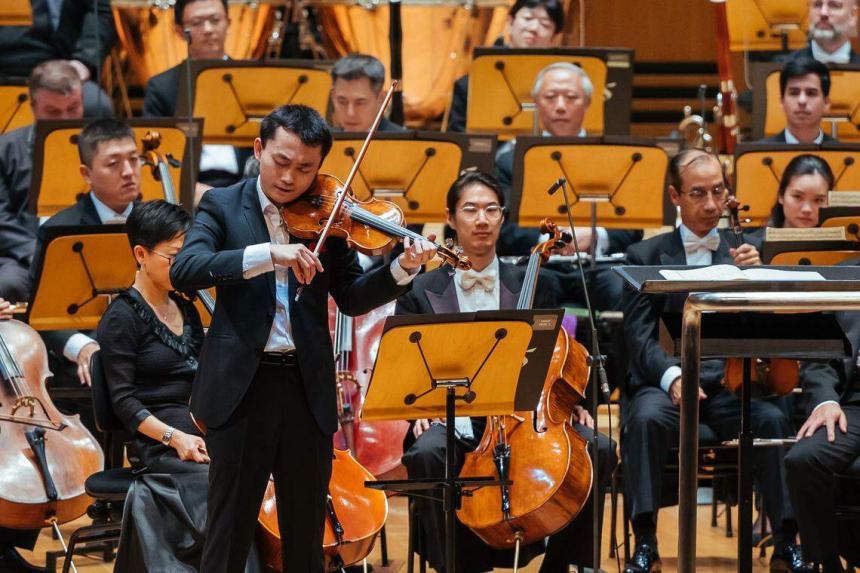Winds Above The Sea
Hans Graf and He Ziyu
Singapore Symphony Orchestra
Esplanade Concert Hall
Last Friday, 7.30pm
Despite its rather daft title, this concert uniting the music of Frenchman Claude Debussy (1862-1918) and Russian Igor Stravinsky (1882-1971) generated an unusual synergy.
The older composer had much praise for his younger colleague, and after the death of Debussy, Stravinsky composed his Symphonies Of Wind Instruments (1920) in memory of him. This 10-minute-long single movement work was not an actual symphony, but used the Latin root words “sym” and “phonos” to mean “sounding together”.
Its crunching dissonances and acerbic idiom were influenced by Russian folk music where simple melody and rustic rhythm were united, in the spirit of Stravinsky’s earlier epoch-making ballet The Rite Of Spring.
The 23 woodwind and brass players formed a taut and cohesive unit under music director Hans Graf, the end result being much less forbidding than one expected. Debussy would have approved.
Also written during Stravinsky’s neoclassical phase was his only Violin Concerto (1931), which unusually had four movements.
Resembling a baroque concerto grosso and Bach cantata in parts, its spirit was well-captured by young Chinese violinist He Ziyu. He nailed its opening “motto” chord (one uniting all movements) with confidence and exhibited pinpoint clarity in the fast and angular outer movements, a Toccata and Capriccio respectively.
Despite the work’s astringent idiom, his plain-speaking yet sweet violin tone held up well for the two central Arias. Without the rhythmic strait-jacket, his instrument was allowed to freely emote, which was voiced with neither affectation nor idiosyncracy.
Cheered on by an audience marvelling at how he made such thorny music sound easy, his encore was a totally apt one.
The slow movement from Bach’s unaccompanied Sonata No. 2 showed the two composers being perfect bedfellows.
The concert’s second half belonged to Debussy’s La Mer (1903), three symphonic sketches of the sea. This was a speciality of the Singapore Symphony Orchestra, having recorded it to much success under its previous music director Shui Lan on the Bis label.
If anything, this live version under present director Graf sounded even more vivid.
An immediacy was established in From Dawn To Noon On The Sea, over a ceaseless throbbing rhythm where mellow strings and guest concertmaster Igor Yuzefovich’s violin provided a gilded lining.
Gentle woodwinds, plangent brass and shimmering percussion all melded into this evocative sound canvas which culminated with a majestic tidal roar at the movement’s close.
Play Of Waves, the scherzo-like central movement, became a ballet coloured by the tinkling of pitched percussion.
The full wrath of the ocean came to fruition in Dialogue Of The Wind And The Sea, with Jon Paul Dante’s trumpet leading the charge.
Reliving the experience of storm clouds and billowing waves, it was the frisson of excitement and the sense of being on the edge which made this performance a truly memorable experience.

